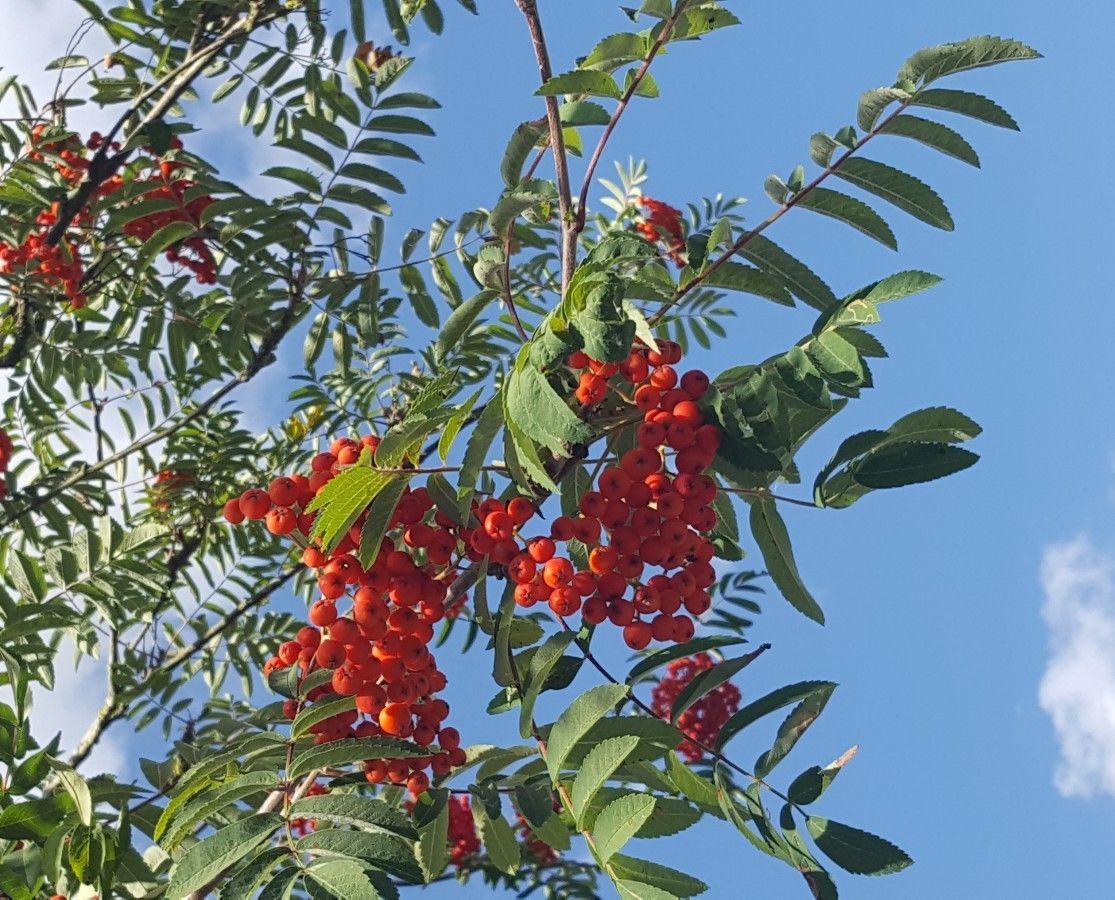The rowan mountain ash tree, also known as the European mountain ash or simply mountain ash, is a beautiful and versatile landscaping tree that can enhance any outdoor space. With its attractive foliage, white spring flowers, and clusters of bright red-orange berries in fall and winter, it’s easy to see why mountain ash trees are so popular. If you’re looking to add one of these eyecatching trees to your own yard or garden, here’s what you need to know about finding the perfect rowan mountain ash for sale.
A Bit About the Rowan Mountain Ash Tree
The rowan mountain ash (Sorbus aucuparia) is a small deciduous tree that thrives in zones 3-7. It grows to a height of 15-20 feet tall and 10-15 feet wide making it a great choice for smaller yards. The compound leaves emerge a soft green in spring, changing to a beautiful orange-red hue in fall. Clusters of small white flowers bloom in late spring, eventually giving way to bunches of red berries. These berries are a vital winter food source for birds and other wildlife. Beyond its ornamental merits, mountain ash wood is strong and flexible, historically used for tool handles and walking sticks.
Choosing the Right Size Tree
When looking for a rowan mountain ash for sale one of the first decisions is tree size. Luckily, you can find mountain ash trees in a range of sizes to suit any space
-
Seedlings or whips are the smallest at just 1-2 feet tall. These tiny trees are perfect for planting in groups and will grow quickly with proper care.
-
Popular 2-4 foot bare root or container trees are a convenient size for establishing your mountain ash in just a few seasons.
-
For more instant impact, look for 5-8 foot standards with an established central leader and light branching.
-
Specimen trees 10 feet or taller provide stunning focal points, but make sure you have adequate space for the mature height and width.
Consider the eventual size of your mountain ash when choosing a starting size. A 15-20 foot canopy needs room to spread!
Selecting a Reliable Nursery
Since mountain ash trees are susceptible to certain pests and diseases, it’s important to source from a reputable nursery. Quality nurseries cultivate healthy, vigorous stock and ship at the right time for planting in your zone. The Tree Store and Burnt Ridge Nursery are two recommended online nurseries carrying high-quality mountain ash trees for sale.
When buying online look for key signs of quality, like:
-
Detailed product descriptions with growing zones, heights, and origin.
-
Trees shipped at proper planting times for your region.
-
Healthy bare root or containerized stock that avoids root damage.
-
Clear planting and care instructions for your specific tree.
-
Strong guarantees/warranties from 1-5 years.
Choosing the Right Mountain Ash Variety
While the European mountain ash (S. aucuparia) is most common, other varieties offer unique traits like columnar or dwarf growing habits, unusual foliage, or double flowers. Popular varieties include:
- ‘Golden Glory’ – Bright yellow foliage
- ‘Red Cascade’ – Weeping branches
- ‘Rubra’ – Orange-red fruits
- ‘Joseph Rock’ – Twisted golden branches
Consider your specific landscape needs when selecting a variety. For example, a compact type like ‘Little Rowan’ is ideal for smaller urban lots.
Preparing the Planting Site
Mountain ash trees prefer moist, well-drained, acidic soil. Amend the soil with compost or peat moss if needed to create favorable growing conditions. The planting spot should receive full sun to part shade. Space multiple trees 15-20 feet apart.
Before planting, remove any nursery stakes or ties and examine the root system. Trim any damaged roots and gently loosen circling roots. This encourages healthy establishment after planting.
Proper Planting Techniques
Here are some tips for planting your new mountain ash:
-
Dig a hole 2-3 times wider than the root ball. Depth should match the root ball or container size.
-
For bare root trees, build a cone of soil in the center to spread the roots over. Container trees can be planted directly.
-
Backfill the hole halfway and water well before finishing. This removes air pockets.
-
Stake the tree for the first year if needed in windy areas.
Post-Planting Care
Regular watering is key while your mountain ash establishes. Water thoroughly after planting and give supplemental water during dry periods for the first few seasons. Apply 2-3 inches of mulch around the base to conserve moisture.
Mountain ash benefit from yearly feeding in spring with a balanced fertilizer. Organic options like compost tea nourish the soil biology. Prune only to remove dead or damaged branches in the first years. As the tree matures, prune to maintain the natural form and open the canopy for good air circulation.
Enjoy the Seasonal Beauty
One of the best parts of growing mountain ash is enjoying their evolving beauty through the seasons. The cheerful spring blossoms give way to lush summer foliage, then a blazing fall display, and finally bright red winter berries. Give mountain ash trees the right care and conditions, and they’ll provide year-round color and bountiful fruit for decades to come.
When you’re seeking the perfect addition of multi-season interest, fantastic fall color, and wildlife habitat, look no further than the rowan mountain ash. Follow this guide to find and properly plant the ideal mountain ash tree for your unique landscape.
The Rowan Tree – Wild Food, Health Benefits & Mythology (Mountain Ash)
FAQ
Is a rowan tree the same as mountain ash?
Can rowan trees grow in the US?
Do mountain ash trees grow quickly?
What is the fastest growing ash tree?
- A Complete Guide to Caring for Yuki Cherry Blossom Shrub - January 23, 2025
- Identifying Red Hot Poker Seeds: What to Look For When Harvesting Torch Lily Pods - January 23, 2025
- A Complete Guide to Harvesting Evening Primrose Seeds - January 23, 2025

